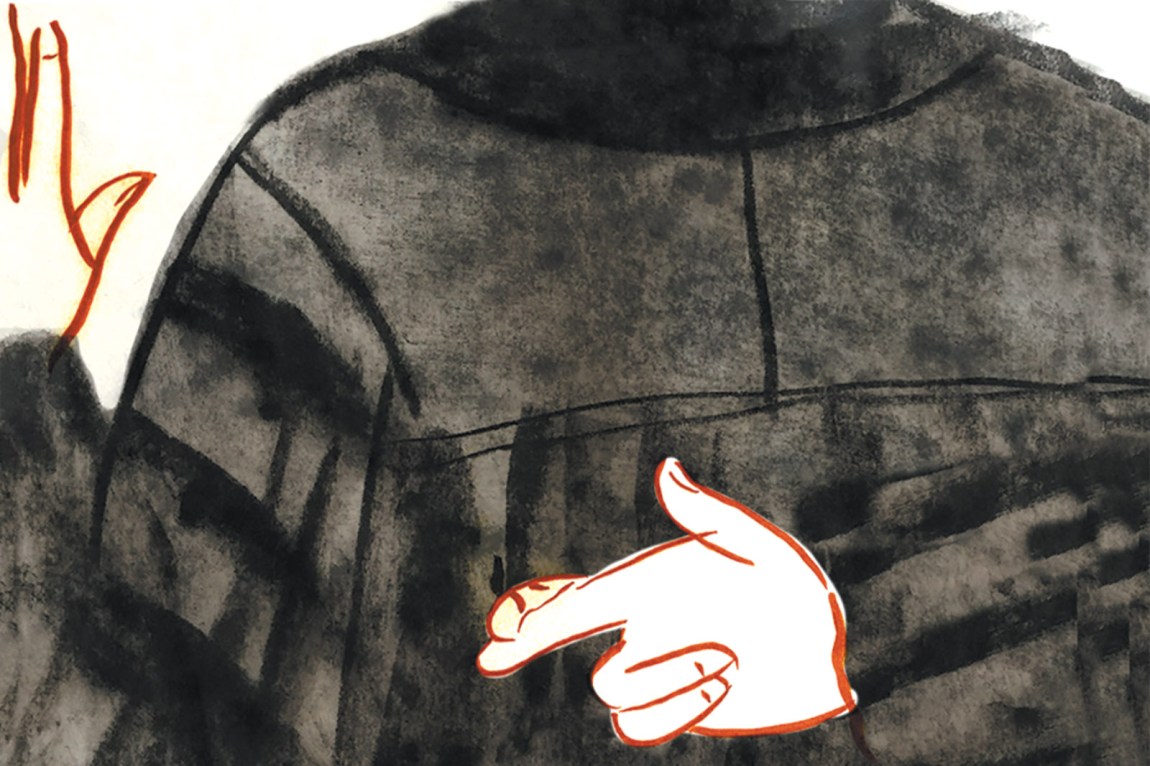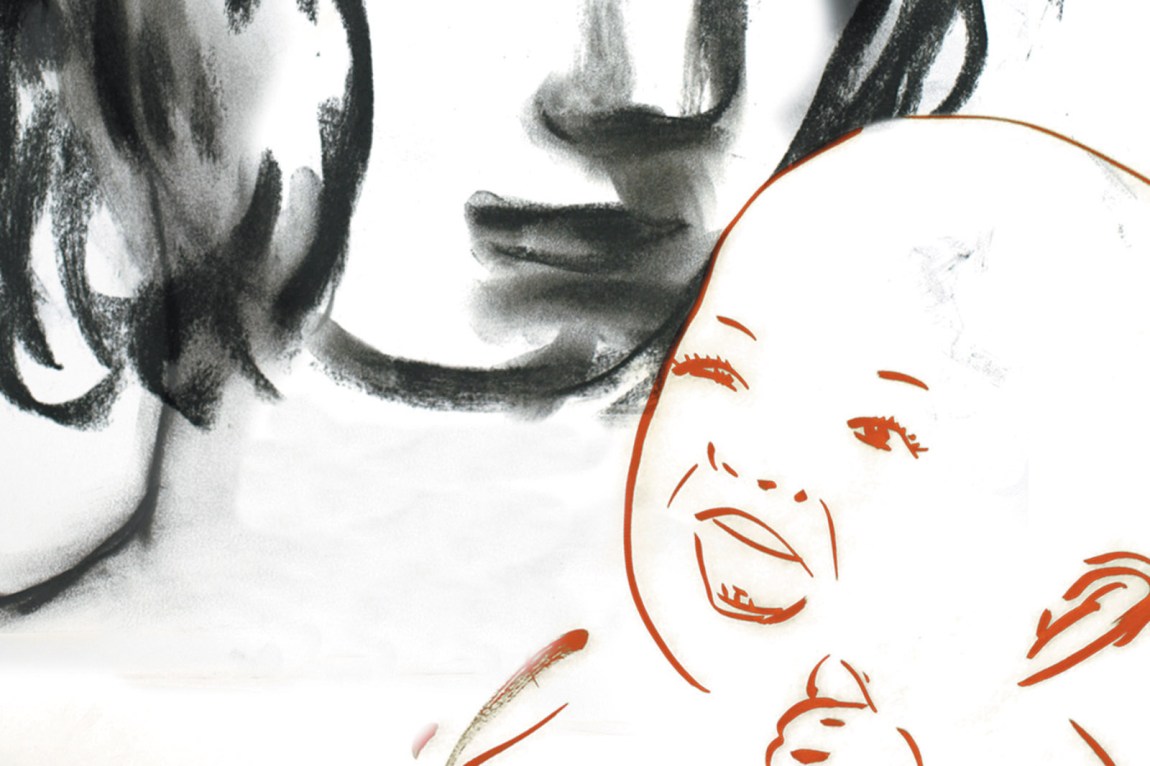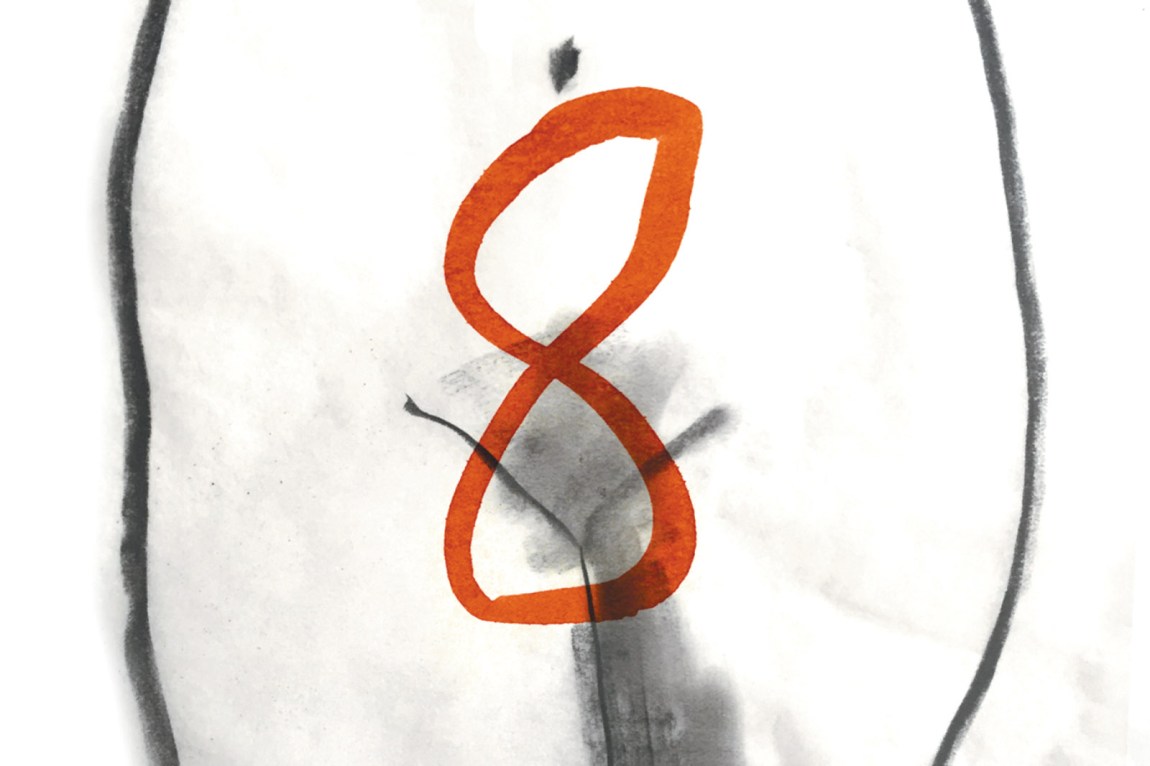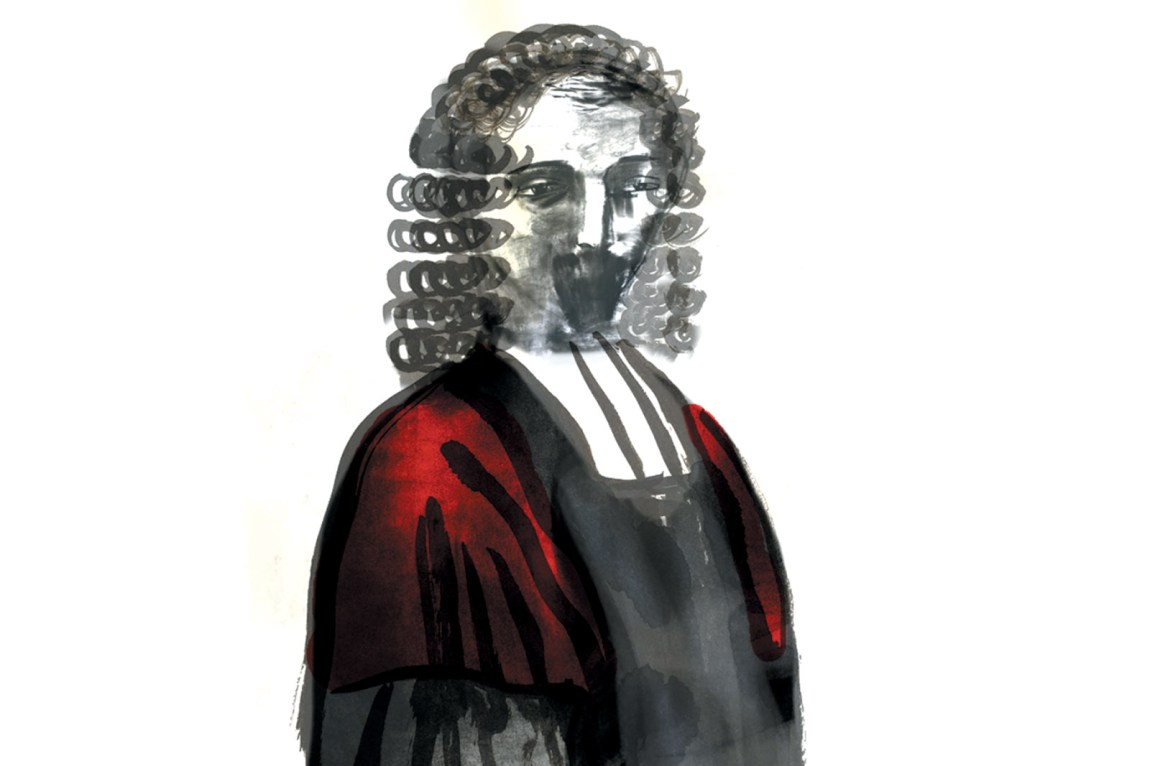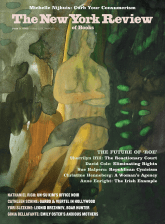Aspirations
In the windowless clinic where I work, the back hallway is lined with a row of small, square rooms. Inside each room is a desk, a computer screen, a box of tissues, two chairs, and little else. This is where the clinic counselors meet with patients who have come in for their abortions.
In those small rooms, most of the day’s work is completed without me. The counselors have a set of questions they’re required to go through with each patient, but often the conversation goes off script. A woman starts talking about her life: a fight with her partner, her younger kid’s asthma, her sister’s wedding next week, her mother’s alcoholism. All of it is relevant, if it feels relevant to her; the counselor affirms this with an attentive silence, a sympathetic gaze, the occasional mm, ah, I see. Sooner or later they’ll get around to the specific question critical to today’s visit: Is she certain of her decision and ready to proceed today?
Eventually most patients will walk down another hall to one of the procedure rooms, which are larger, with a more clinical ambience—equipped with an exam table and stirrups, an electric suction device, sterile surgical equipment, an ultrasound machine. These rooms are where I spend most of my day, performing aspirations.
An aspiration is an efficient, relatively gentle approach to emptying the uterus. It involves a small tube, manual or electric suction, and a circular, back-and-forth motion of my hand and wrist. Today it is how every doctor performs nearly every early abortion; it is also used to manage prolonged or complicated miscarriages.
Occasionally—perhaps for one or two patients each day—there is a pause, a hiccup in the clinic’s streamlined activity. Before she makes it down the hall for her procedure, I am called into a counseling room to review her case and speak with her.
Like most of my patients, she has come into the clinic for an abortion, or at least to find out if she’s eligible for an abortion. Unlike most of them, perhaps she hasn’t definitely decided what she is going to do. Or she came in because of some symptoms: she is bleeding, possibly miscarrying; she wants to know what I can tell her, what her options are. Or the nurse who performed an ultrasound couldn’t find a pregnancy in the uterus, raising the possibility of an implantation in the fallopian tube or elsewhere.
After we discuss the details of her situation, assuming they don’t present an emergency (uncontrolled bleeding or symptoms that suggest an ectopic pregnancy), I tell her that how we proceed will be largely based on her goals and preferences: Is she certain about terminating the pregnancy, or does she need more time to think about it? If she is already miscarrying, does she prefer the idea of letting her body pass the tissue on its own, or would she like medications or an aspiration procedure to speed up that process? Does she wish to discuss all of this with her partner or a loved one, or would she prefer to decide alone?
She often seems surprised at how much time we spend discussing these personal, nonclinical elements of her decision. When she asks me, “What do you recommend?” I tell her, “There’s no real basis for a medical recommendation in this case. Any of the options I’ve presented are safe and reasonable. It’s a personal decision. It’s really up to you.”
Then I see a look in her eyes, like: You’re kidding. Up to me? Sometimes it is a look of fear, at least at first. But inevitably it transforms into something else, a probing gaze that shows me she is, in my presence, accessing a very private place within herself. I have not provided her access—she can get there without me—but I have given her permission to enter it. To withdraw, for a moment, from me and my medical expertise, from the judgments and biases of her friends and family, from the shouts of the protesters in the parking lot. This is one of my favorite parts of my job: watching her go into that place and emerge with a decision, one that belongs to her.
She came in for an abortion, and what she got instead, or first, was a glimpse of her agency, her own vision of what her future will look like. These are just some of the many things we stand to lose with the overturning of Roe v. Wade. Those private conversations in windowless rooms. Those aspirations.
—Christine Henneberg
A Heedless Majority
The conventional wisdom is that one cannot judge a Supreme Court justice by his or her first few years on the Court. There is nothing that prepares them for the awesome power—and responsibility—that they hold. New justices typically take some time to find their feet and tread lightly as they grow into the position.
Advertisement
Not so, however, for the three Trump-appointed justices—Amy Coney Barrett, Brett Kavanaugh, and Neil Gorsuch—who have been on the Court one, three, and five years, respectively. If the leaked draft opinion by Justice Samuel Alito in Dobbs v. Jackson Women’s Health Organization holds, all three will join in overturning one of the Court’s most important decisions, one that protects the fundamental right of women to control their own bodies and fates and that has stood for half a century.
There are many reasons a new justice might pause before voting for such a radical result. For five decades a majority of the Court has applied and reaffirmed Roe v. Wade. Thirty years ago, it rejected an explicit request to overturn Roe, emphasizing the particular importance of adherence to precedent and the centrality of abortion access to women’s equal status. The fact that President Donald Trump promised to name justices who would overturn Roe might also give pause. Such litmus tests politicize the Court, and its legitimacy rests on its ability to rise above the kind of raw politics Trump reveled in.
But those are just the jurisprudential concerns. One might also expect a justice to hesitate in light of the disastrous consequences the decision will visit on at least half the nation, who will suddenly lose the right to make for themselves one of the most important decisions a person can make—whether to have a child. (Indeed, men also benefit from being able to plan whether and when they and their partners have a child.) And while all women will lose the constitutional right, the loss will be felt immediately by those most vulnerable in our society—young women without financial means or in difficult family situations, disproportionately people of color.
Justice Alito’s draft maintains that there’s nothing wrong with overturning constitutional precedent because some of the Court’s most celebrated opinions have done so. Brown v. Board of Education overturned the “separate but equal” doctrine announced fifty-eight years before it in Plessy v. Ferguson. In all, Alito cites some thirty decisions in which the Court overturned precedent. But what is most striking about his list is that the vast majority of the decisions expanded rights. A handful watered down rights protections, but none eliminated a right altogether. Alito’s long list, beginning with Brown, only underscores how unprecedented Dobbs will be if it eliminates a long-recognized right.
The implications of Alito’s reasoning, moreover, are not limited to abortion. He maintains that the Court should protect rights not expressly specified in the Constitution only if they are “rooted in this Nation’s history and tradition.” But virtually all the constitutional rights we enjoy today reach beyond those recognized by “history and tradition.” Indeed, the framers used open-ended terms like “liberty,” “due process,” and “equal protection” to permit and even invite such evolution.
If we were to pare back rights to those enjoyed in 1791, when the Bill of Rights was adopted, or even to the late 1800s, when the Civil War Amendments were added, many of the rights we take for granted would be in jeopardy. The Equal Protection Clause did not prohibit sex discrimination or racial segregation when it was ratified in 1868. Nor did the “liberty” protected by the Due Process Clause include the right to use contraception or to choose one’s sexual partner or spouse regardless of gender or race.
Alito says abortion is different from other “liberties” because it “destroys…‘potential life.’” But that distinction has no logical connection to his reasoning. The rule he announces is that rights not specifically mentioned in the Constitution will be recognized only if they are rooted in history and tradition, not that rights that obstruct potential life are the only ones so limited.
Finally, to call Alito’s assessment of the ruling’s consequences for women cavalier would be charitable. He rejects any claim that abortion laws violate equal protection by noting that not all women are pregnant, but on that theory a law that said no one with sickle cell anemia need apply would not be race discrimination. And he throws up his hands and says that we just cannot know whether women have relied on the right announced in Roe to plan their lives, families, and careers, when that fact is plainly undeniable.
The decision is not final. But if the Court sticks with this result, it will be the work of a truly radical majority, one that is willing through a raw exercise of power to take away from half the country one of the most important rights they enjoy.
Advertisement
—David Cole
Ireland’s Painful Experience
On a sunny day in 2018 Irish women danced, sang, and cheered on the grounds of Dublin Castle when the ban on abortion in Ireland was finally voted out of existence. I wasn’t there, I did not dance, I stayed at home and wept over my computer keyboard, to the concern of my children. The fight for bodily autonomy had been too long and too damaging, and I had been no good at it.
In 1983 a national referendum approved the Eighth Amendment of the Irish Constitution, which acknowledged “the right to life of the unborn…with due regard to the equal right to life of the mother.” As a result, Irish women who needed an abortion, for any reason, including medical, had to travel to England.
It was many years before I questioned the word “mother” as a legal term. Isn’t “mother” already a relationship? What about “impregnated person”—could we start from there, perhaps, instead of from one of the most binding words in the English language?
In the many arguments that followed the 1983 vote, people talked about the victims of rape, of incestuous rape, of statutory rape; about women with learning difficulties, women in comas, women with treatable cancers, women carrying fetuses with fatal abnormalities, women at risk of death during miscarriage. All these women were called “mothers,” both by our constitution and by the Catholic Church, and anguished talk about their circumstances was beside the point. The “right to life” clause was not about circumstances. It was not about medical practicalities. It was not about consent, because psychology was beside the point. Pregnancy was an erasure of the self. A person was turned, by impregnation, into both miracle and meat.
The need for argument continued, however: the right to life is an idea, but the human body is not an abstract space. In 1992 a further referendum was held to clarify the “equal right to life of the mother” when a raped, pregnant fourteen-year-old girl in the care of the state became suicidal, and a plan to bring her to England for an abortion came before the Irish Supreme Court. The pregnancy ended in miscarriage shortly after the judgment, which allowed her to travel, but the case opened a number of questions that were returned to the Irish people. Could the “risk of self-destruction” be counted as a reason to allow someone an abortion? The Irish people saw the raw cruelty of such a question and 65 percent voted to say that it could.
Can you imagine what it is like to put your mark on a paper ballot that asks you to tease out the issue of a raped child’s inconvenient ability to end her own life? I was so sickened, my hand shook. I also felt completely defeated, and though I voted, I did not march, argue, speak, or protest. In 1992 I could not find a way out of the argument partly because there is no way out of an argument framed by those on the other side.
Why argue at all? Middle-class women traveled. In 2001 the morning-after pill arrived, though you had to pay a doctor and embarrass yourself to get it. Still, women suffered silently and always anonymously. Some women died. There were a few hard cases before the courts, but no names were given; they were just letters—A, C, X—followed by legal depositions.
In 2012 Savita Halappanavar died in a Galway hospital when she was not offered proper care for a miscarriage, out of concern for the already doomed fetus. Her husband, Praveen, asked, “Why didn’t they look at the bigger life?,” meaning Savita’s, and this question was so normal, so self-evident, that it made the equal right of “the unborn” seem a hopeless abstraction. It was suddenly impossible to explain, to a man who had grown up in India, that Catholic Ireland had a big “idea” about life, to which his wife had been sacrificed.
Ireland’s abortion ban was always a failure—medically and practically. All it did was make people’s lives more difficult and more dangerous. The shift in public opinion that led to its repeal did not happen as a result of argument, whether legal, moral, or religious. It happened because anonymity was broken. Savita Halappanavar’s name was known, her photograph was on the news and then on placards—may she rest in peace. After some time, living women put their names to stories about abortion, and a powerful taboo was broken. More than three quarters of voters in 2018 said that they had been influenced by personal stories they had heard in the media or from people they knew.
And yet when the Irish people finally voted for access to abortion, my feelings were not simple—it had been too toxic, all of it. I needed to mourn those difficult years. My eighteen-year-old daughter had no idea why I cried. For her, the issues were entirely clear. She was excited by the fact that she could vote, and that the first time she did so was for the winning side.
—Anne Enright
Stealing the Crown Jewels
The end of Roe v. Wade and Planned Parenthood v. Casey would be catastrophic for American women, generations of whom have lived with access to abortion. Near the end of his draft opinion in Dobbs v. Jackson Women’s Health Organization, however, Justice Samuel Alito gives a cynically upbeat prediction about its potential effects. Rather than forthrightly address the suffering the Court’s decision would cause, he casts it as a benevolent grant to women voters in individual states—one that would “return the issue of abortion to legislative bodies” and allow “women on both sides of the abortion issue to seek to affect the legislative process.” For emphasis, he reminds us that “women are not without electoral or political power.”
This is a declaration that many people in both major political parties may be tempted to endorse, and indeed there are states where women will be able to marshal their electoral power to protect abortion rights. But there are many states where this will not be so—especially in the South, where a majority of Black women still live. And that makes it impossible to read the draft opinion without also thinking about the Court’s recent, devastating voting rights jurisprudence and its effect on the electoral power of Black women.
The Supreme Court’s 2013 decision in Shelby County v. Holder removed critical protections of Section 4 of the Voting Rights Act and struck down the preclearance formula of Section 5 of the act, which compelled jurisdictions with a history of voting discrimination to submit proposed electoral changes to a federal authority for approval before enactment. That provision had made the Voting Rights Act the crown jewel of civil rights legislation because it created a regime to head off discriminatory practices before they became law. After striking down the use of the preclearance formula, the Court in Shelby perhaps sought to minimize the damage by reinforcing that Black voters would remain free to challenge discriminatory voting laws after they were enacted by bringing claims under Section 2, which allows Black voters to bring claims to challenge election laws and practices that dilute or deny minority voting strength.
Since then, Black women have had to overcome an accelerating and complex array of voter suppression schemes, which have proliferated with alarming speed. Even as the Dobbs draft circulates, the ability of Black and Latina women to vote—and have their votes counted—is in peril as a result of voter suppression laws passed in states including Georgia, Texas, and Florida. Those laws are being challenged by civil rights groups in litigation unlikely to be fully resolved before this year’s midterm congressional and state elections.
Black women voters have proved incredibly resilient, leading record turnout for the Democratic base in the 2020 presidential election and in the Georgia special election in 2021. Black voters stood in line for nine hours in Fulton County, Georgia, in the 2020 presidential primary, during some of the worst days of the pandemic. Their patriotism and determination were rewarded by the Georgia Republican Party with a new set of voter suppression laws, including one section that criminalizes giving water or refreshments to voters standing in line.
That law and additional elements of newly enacted voter suppression laws are also the subject of lawsuits brought under Section 2 of the Voting Rights Act. But those challenges will not be evaluated using the standard for reviewing claims under Section 2 that has been in place for more than forty years, because last summer, in Brnovich v. Democratic National Committee, Justice Alito himself announced a new and more restrictive test for evaluating claims under Section 2 that runs roughshod over the test articulated by Congress and used effectively for decades by lower courts. Justice Elena Kagan, writing in dissent, described his majority opinion as a “law-free zone.” He doesn’t seem to mind. Just a month ago, the Court allowed a flagrantly racist gerrymander, which had been painstakingly detailed in a 234-page decision by a federal trial court in Alabama, to go forward for this year’s midterm elections. The Court announced that decision on the “shadow docket”—its portfolio of presumably temporary emergency orders decided without a full opinion by the Court, and without full briefing or oral argument by the parties.
All of these decisions have made it harder for Black women to exercise the electoral power Alito suggests is their recourse to secure abortion access. When Alito purports to place the future of abortion in the hands of women voters, he is denying the stark political disenfranchisement of Black and Latina women that the Court itself has abetted. To which women, then, is he referring?
Whether or not the language of this leaked draft survives the process of review, we cannot unsee what it has revealed about the current majority’s ambitious project of retrenchment. If this draft opinion holds, the Court will be restricting the fundamental privacy rights of Black women while dismantling the tools we need to protect our political power.
—Sherrilyn Ifill
Before the Fall
The day before the leak of Samuel Alito’s retrograde Supreme Court draft opinion, I happened to be on an airplane watching The Eyes of Tammy Faye, the 2021 film that fictionalized the rise and fall of one of America’s premier evangelical Christian couples, Tammy Faye and Jim Bakker.
In a scene set in 1985, Jerry Falwell—the older, more established and politically astute televangelist—is being shown the site in Fort Mill, South Carolina, where Jim Bakker is building a Christian theme park. As they are bouncing along in a jeep, Falwell says to Bakker, “The coalition that we delivered to Reagan—Vice President Bush is counting on us doing the same thing for him in ’88…. Republicans can’t win without us. You need to understand how powerful we are in this fight for our nation’s soul.”
Falwell’s fight for the nation’s soul, as represented in the film, refers to homosexuality and AIDS: “This ‘gay cancer’ is affecting our country, our families,” he says. In reality, the fight began years earlier, in 1979, when Falwell was persuaded to use abortion to deliver white evangelicals to the Republican Party.
At the time, evangelicals were largely apolitical, and if they voted at all they did not do so as an organized bloc. The religious scholar Randall Balmer has shown that even as late as 1976—three years after Roe—the Southern Baptist Convention reaffirmed a resolution, first passed in 1971, urging members
to work for legislation that will allow the possibility of abortion under such conditions as rape, incest, clear evidence of severe fetal deformity, and carefully ascertained evidence of the likelihood of damage to the emotional, mental, and physical health of the mother.
But the Republican strategist Paul Weyrich understood that capturing evangelicals could deliver the presidency to Ronald Reagan and solidify the future of his party.
By the late 1970s, as I have written in these pages,* Falwell was concerned that Democrats were about to rescind the tax-exempt status of the all-white academies—including his own, in Lynchburg, Virginia—that evangelicals, among others, had established across the South in the 1960s and 1970s in response to federally mandated desegregation. As Balmer has argued, Weyrich knew that Republicans would need to appeal to something more socially acceptable than racism. The ginned-up rhetoric around killing babies became a cynical ploy to lure voters and perpetuate racial discrimination.
Before this alliance, on the whole Republicans were not opposed to abortion. In 1967, as governor, Reagan had signed off on the California Therapeutic Abortion Act, then one of the country’s most liberal abortion laws. Five years later, a Gallup poll found that nearly 70 percent of Republicans said that only a woman and her doctor, not the government, should be involved in the decision to terminate a pregnancy. But once Weyrich brought evangelicals into the tent, Republican voters—along with prominent Republican politicians like Reagan and George H.W. Bush—became vocal anti-abortion advocates. They traded women’s bodies for political power.
So here we are, nearly half a century after the Supreme Court codified a woman’s right to privacy and thus to bodily integrity in Roe, and the tail is wagging the dog: evangelicals have annexed the Republican Party, which has used its outrage machine to pass laws in many states that make it harder for voters, especially voters of color, to cast ballots. The result is a right-wing minority with more political power than the majority, which has meant a Supreme Court stacked with justices appointed to pursue a Christianist agenda. It’s dominoes, and anyone who believes that overturning Roe is where the game ends is not paying attention.
—Sue Halpern
Read our complete series responding to the leaked draft at nybooks.com/roe.
This Issue
June 9, 2022
Must We Grow?
The Monsters in Cabinet 13
-
*
See “How Republicans Became Anti-Choice,” The New York Review, November 8, 2018. ↩


